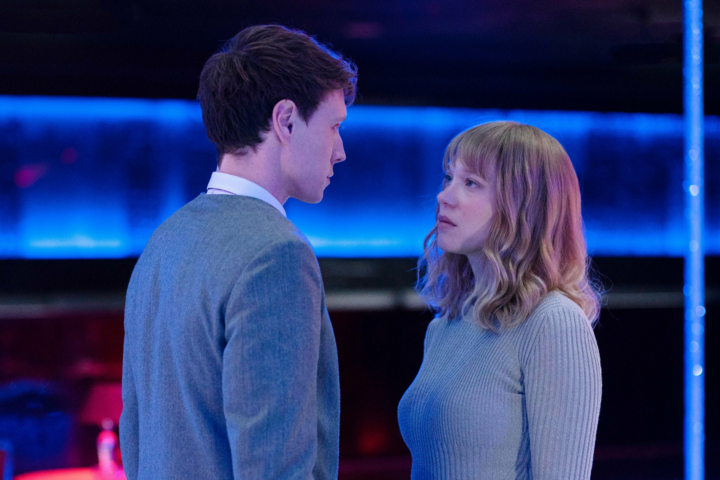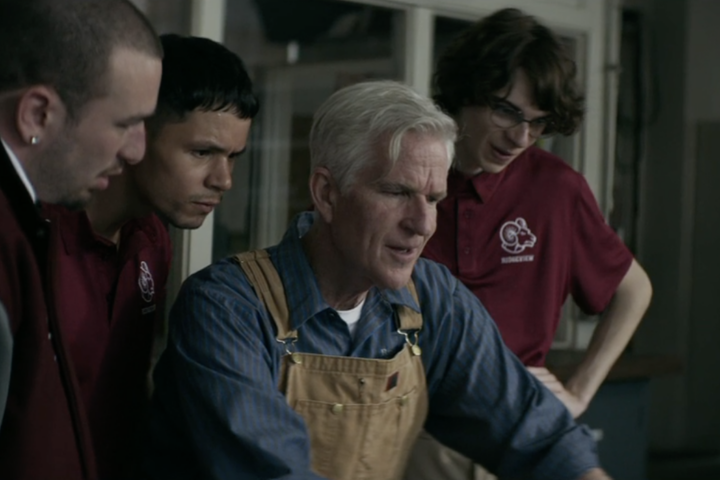The cynic in me says that The Amazing Spider-Man, the reboot of the Marvel movie franchise that comes just seven years on the heels of the last film in the series, 2005’s Spider-Man 3, is merely a studio marketing move to cash in on new crop of moviegoers, an indication of creatively bereft Hollywood and transparent grab at more cash from the Marvel franchise phenomenon currently dominating this year’s box office with The Avengers.
And while these may be the obvious reasons why The Amazing Spider-Man exists, they have nothing to do with the surprising quality of this very well-made and entertaining film, featuring a “darker” (think teen angst) take on the Peter Parker saga and terrific performance by Andrew Garfield (Never Let Me Go, The Social Network) as the bullied teen who comes into his own after falling in love with a nice girl (Emma Stone), figuring out his life’s purpose in the process. So what if that process involves a little human-insect DNA splicing?
The set-up of The Amazing Spider-Man feels familiar, yes, and for awhile screenwriters James Vanderbilt, Alvin Sargent and Steve Kloves connect the familiar dots of Peter Parker’s sad origins. The film’s entire first section is devoted to these details, and we learn how Peter’s parents vanished mysteriously leaving him in the care of Uncle Ben (Martin Sheen) and Aunt May (Sally Field, terrific). As expected, Peter is an aspiring photographer at school, this time bullied by Flash (Chris Zylka). And then there’s pretty Gwen Stacy (Emma Stone, smart as always), who takes note of how Peter is bullied and takes a liking to him.
When Peter discovers his father’s long-hidden briefcase, it sends him on a mission to discover the identity of a man in a photograph, and that would be Dr. Curt Connors (Rhys Ifans), a mad scientist missing his right arm who runs Oscorp, the skyscraping headquarters of some revolutionary new work being done to splice different species DNA. Though the film is set in Manhattan, Oscorp is one of those eyesore structures specific to movies like this (Stark Enterprises comes to mind), which fails to blend with the architecture of the city and makes you wonder how it was ever approved for construction in the first place.
It turns out that Gwen Stacy works after school as the “head intern” for Dr. Connors, whom Peter befriends. Before long he discovers that Connors is working on a plan to fuse lizard DNA with his own, thereby regenerating his lost arm. You can see where this is going. When Peter gets bitten by a genetically enhanced spider in the lab, the rest is history.
Some of the film’s most fun stretches come after Peter realizes he has this new ability but is unable to moderate or channel it, including a comedic sequence on the subway where he accidentally dispatches some thugs and the destruction of both his computer and bathroom. Garfield is delight to watch here as Peter continues to surprise himself with his newfound strength. There’s also the parallel story about Uncle Ben and Aunt May’s increasing concern with Peter’s erratic lifestyle, leading indirectly to Uncle Ben’s death, which has a devastating effect on Peter, who spends his nights tracking petty criminals in the hopes of finding the responsible gunman.
Before long, Connors has morphed into a huge lizard (the CGI is appropriately scaled) stalking the sewers and plotting to destroy the city. In a rousing scene atop the Williamsburg Bridge, Connors hurls several cars over the edge while Spider-Man finds a clever way to save the day. The picture’s big climax involves a showdown between Spider-Man and Lizard atop Oscorp (where else?), while Gwen attempts to create an antidote to save New Yorkers from being infected with the lizard-transformation-virus—or something like that.
Gwen’s father (Dennis Leary) is also the chief of police, and in a very funny scene Peter is invited to dinner and to debate the merits of Spider-Man, whom Mr. Stacy sees as a vigilante. And interestingly, the film doesn’t pull punches when it comes to Peter’s injuries sustained during his daring escapades—he’s always coming home bleeding, barely able to walk and beaten—refreshing given the flesh and blood person under the homemade suit, an issue almost always overlooked in superhero pictures. He’s not invincible, and that’s refreshing.
Perhaps it’s true that we don’t need to see this story again so soon, but what The Amazing Spider-Man does with the story is to make the action smaller-scale, remove the sort of theme-park ride sensibility of the Sam Raimi pictures, and give us clearer reasons why Peter Parker assumes his new identity, slowing down for a sweet love story that really works. So this new version is not only a solid action movie, it is a better relationship movie and has more substance than the Raimi pictures (good as they were) managed, with Spider-Man 2 admittedly still the series’ apex.
Director Marc Webb, who helmed 2011’s surprise love story (500) Days of Summer, brings that film’s delicate romantic sensibility to this could-have-been standard action movie, and the results make The Amazing Spider-Man surprisingly involving. With the standard villain plot aside, what makes The Amazing Spider-Man work is that Garfield and Stone, a real-life couple, dance around each other so appealingly—their scenes together could easily pass muster in another movie about star-crossed young lovers. From an early scene of flirtation in the school halls to a rooftop confessional to a poignant moment set in the rain during the film’s final moments, director Webb gives both young actors the latitude to take their young characters a bit beyond what is required or expected for the genre, and that is the secret sauce in this entertaining movie.
3 1/2 stars.



